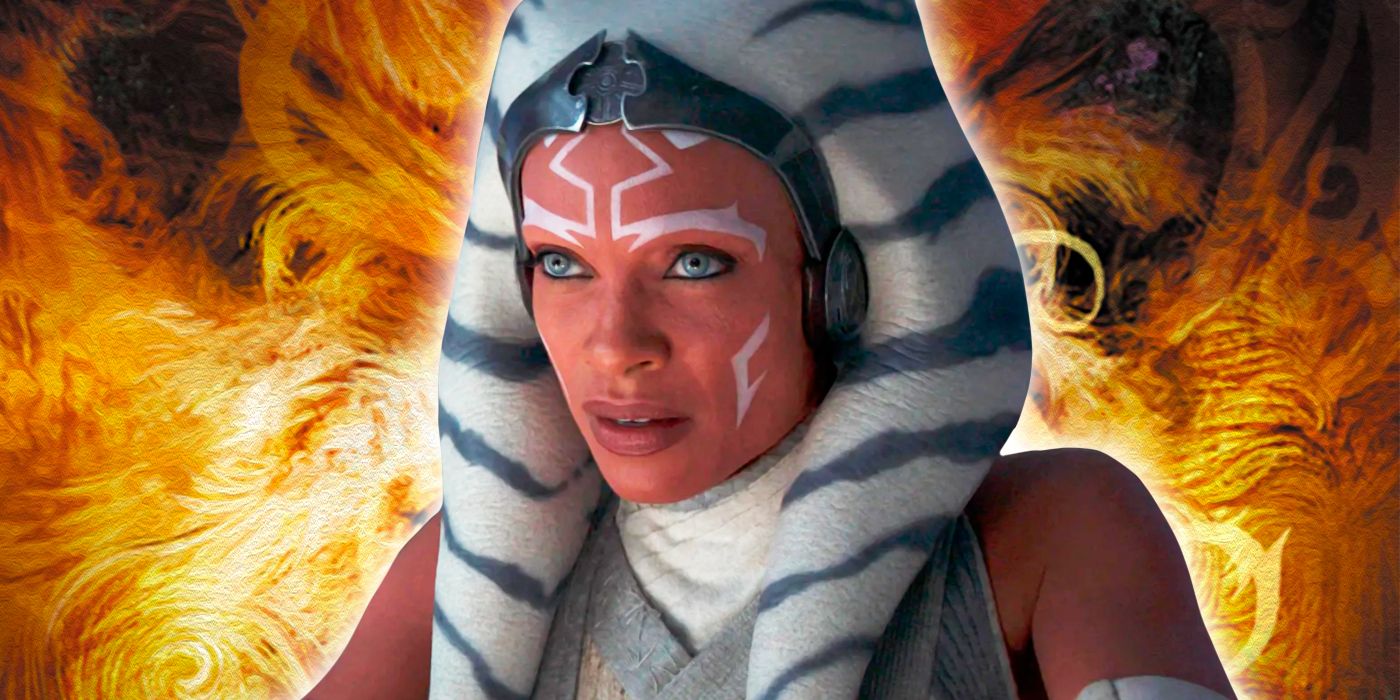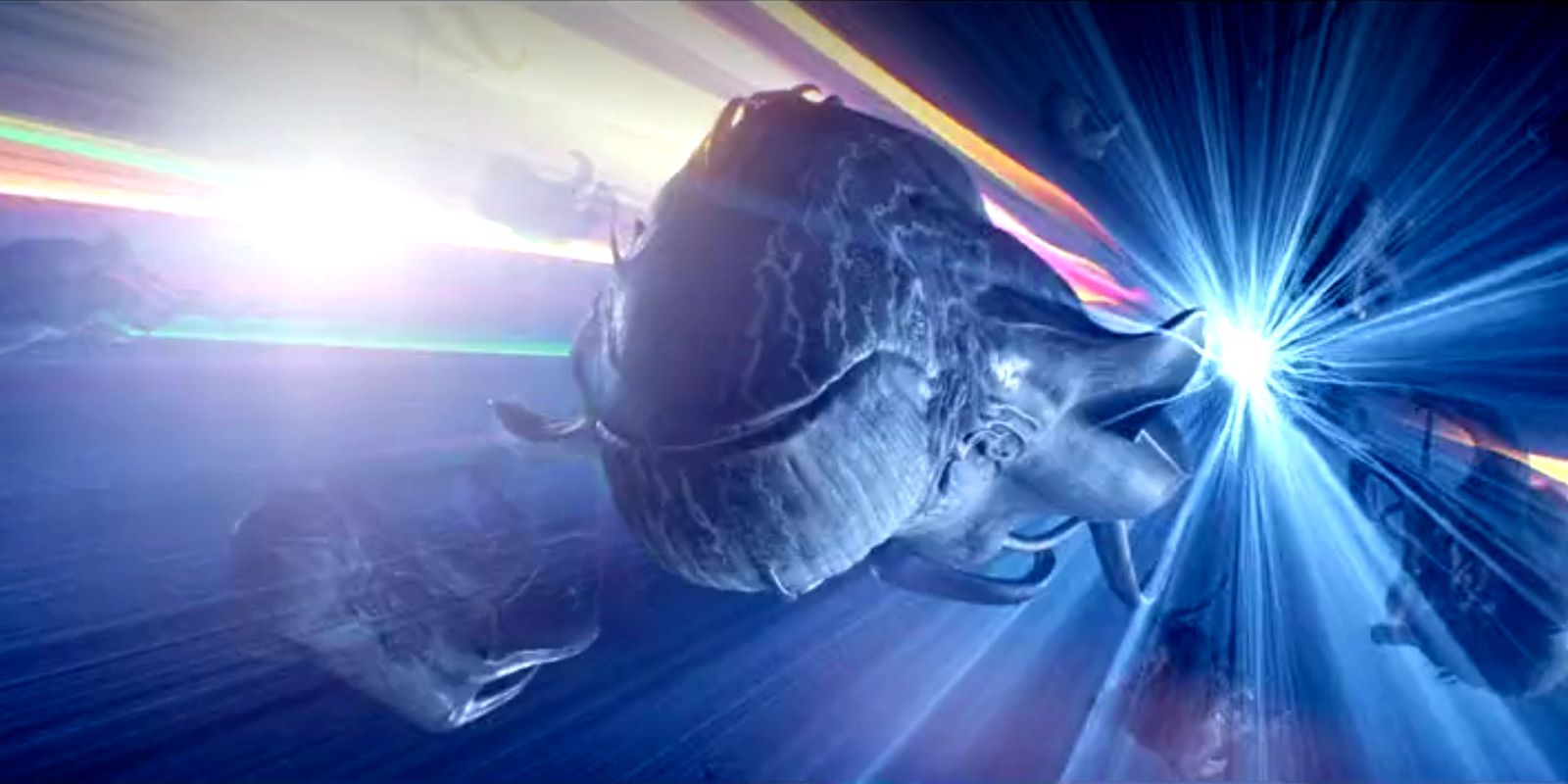Summary
- Ahsoka's finale title, "Part Eight: The Jedi, the Witch and the Warlord," references C. S. Lewis' The Lion, the Witch, and the Wardrobe, highlighting the series' portal fantasy genre.
- The connection between Ahsoka and The Chronicles of Narnia lies in the journey to Peridea, the magical gateway between galaxies, and the similar elements of folklore and mysticism.
- Ahsoka's fantasy focus in the Star Wars franchise suggests a potential shift towards more experimental and esoteric storylines, expanding upon the folklore and exploring the Force and magic within the universe.
The following article contains spoilers for Ahsoka, Season 1, Episode 8, "Part 8: The Jedi, The Witch, and the Warlord, streaming now on Disney+.
Ahsoka’s finale title, “Part Eight: The Jedi, the Witch and the Warlord,” seems like a reference to C. S. Lewis' The Lion, the Witch, and the Wardrobe from the Chronicles of Narnia series. The series is a classic of the portal fantasy genre. The Lion, the Witch, and the Wardrobe focuses on the Pevensie siblings as they are transported to Narnia through a wardrobe. Once there, the siblings must help the noble lion king Aslan defeat the Witch who has declared herself Queen of Narnia. At the novel's end, the children are transported back to war-torn England, but their adventures allow them to return to Narnia later on.
While Ahsoka's finale title choice could just be clever wordplay, it also does recontextualize Ezra's journey to the Peridea galaxy as a portal fantasy and highlights the series' focus on the Force and mysticism. Star Wars has always been a mix of science fiction and fantasy, but this recontextualization focuses more on the folklore of the Star Wars universe. Ezra's return cements the connection to portal fantasy, and he will bring his experiences on Peridea back to the main galaxy as the New Republic prepares to combat Grand Admiral Thrawn's return.
Ahsoka Shares Some Surprising Similarities with the Chronicles of Narnia
While Ahsoka is not a direct adaptation of C. S. Lewis' The Lion, the Witch, and the Wardrobe, there are similarities between the two works. First, the journey to Peridea, like the journey to Narnia, could be classified as portal fantasy. As Annika Barranti Klein explains for Book Riot, "In portal fantasy, a person is transported from one world to another by some sort of magic, usually (but not always!) through a specific place or object such as a wardrobe, rabbit hole, or mirror." In anime, portal fantasy is also known as the isekai genre.
Though the purrgil are not a wardrobe or a mirror, the purrgil do serve as the magical gateway between the main Star Wars galaxy and the Peridea galaxy. While the Star Wars galaxy does claim that there might be a scientific explanation for the purrgils' space travel abilities, as it currently stands, their abilities seem more like magic than technology. Notably, Ezra does not return to the main Star Wars galaxy by purrgil, but in The Chronicles of Narnia series, children find many different routes to Narnia such as wells and magic rings.
Peridea itself also reflects the world of Narnia as the Pevensie children first encounter it. While Peridea is not covered in snow, the Dathomiri have wreaked havoc on the landscape. While there are marauders that seem allied with the Dathomiri, the planet also is home to the Noti, snail or turtle-like creatures that could be comparable to the animals found in Narnia that aid the children as well. Ezra's time among the Noti also gives him a unique understanding of Peridea and the source of the original Nightsisters.
Baylan Skoll's journey to the statues of the Mortis gods also could be seen as an allusion to The Lion, the Witch, and the Wardrobe. In The Chronicles of Narnia series, Aslan is generally known to be an allegory for Jesus, one of the main figures in Christian religions. In Catholicism and other religions, Jesus is part of a trinity with God and the Holy Spirit or the Holy Ghost. Similarly, the Mortis arc in Star Wars: The Clone Wars introduces the Mortis gods, a trinity of the Father, the Son and the Daughter. In Star Wars: The Clone Wars, Season 3, Episode 17, "Ghosts of Mortis," the Daughter even sacrifices herself to save Ahsoka. Thus, the Mortis gods serve as a possible Star Wars' pantheon, and Peridea's connection to them could bring more of this folklore element to the Star Wars galaxy.
Ezra's return at the end of "Part Eight: The Jedi, the Witch, and the Warlord," is also an important element of many portal fantasies. In many cases, portal fantasies are tales where the protagonists take a magical journey and then return to their every day lives, carrying with them the wisdom and experience they have gained by traveling to another world. While most of the Pevensie children except for Susan end up returning to Narnia for good at the end of the series, they do still have many journeys there and back again before they make their final trip. Thus, Ezra's return is a staple part of the portal fantasy genre, and it also provides hope that Ahsoka, Sabine Wren and Huyang might return home in the future.
Ahsoka's Fantasy Focus May Guide Star Wars' Future
Ahsoka's focus on the Star Wars franchise's fantasy elements might inspire a shift in storytelling within the current canon. While both seasons of Star Wars: Visions have featured more experimental storytelling and explorations of the Force, the main Star Wars canon has been more focused on science fiction elements of the franchise. Most of the recent Star Wars series, such as Andor, Star Wars: The Bad Batch and The Mandalorian have told far more grounded tales of the horrors of the Empire and of the galaxy's attempts to move on after the Empire's defeat.
Thus, Ahsoka's allusion to The Lion, The Witch, and the Wardrobe could signify a shift in the trajectory of future Star Wars stories. As Ezra, Thrawn and the Dathomiri Nightsisters return to the main Star Wars galaxy, they might inspire more focus on Star Wars' experimental and esoteric storylines, as shown with the reference to the Mortis gods statues. Through this new focus, Star Wars can continue to expand upon the franchise's folklore and provide new explorations of the Force and other magic within the Star Wars universe.
All eight episodes of Ahsoka are streaming now on Disney+.



